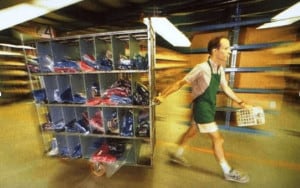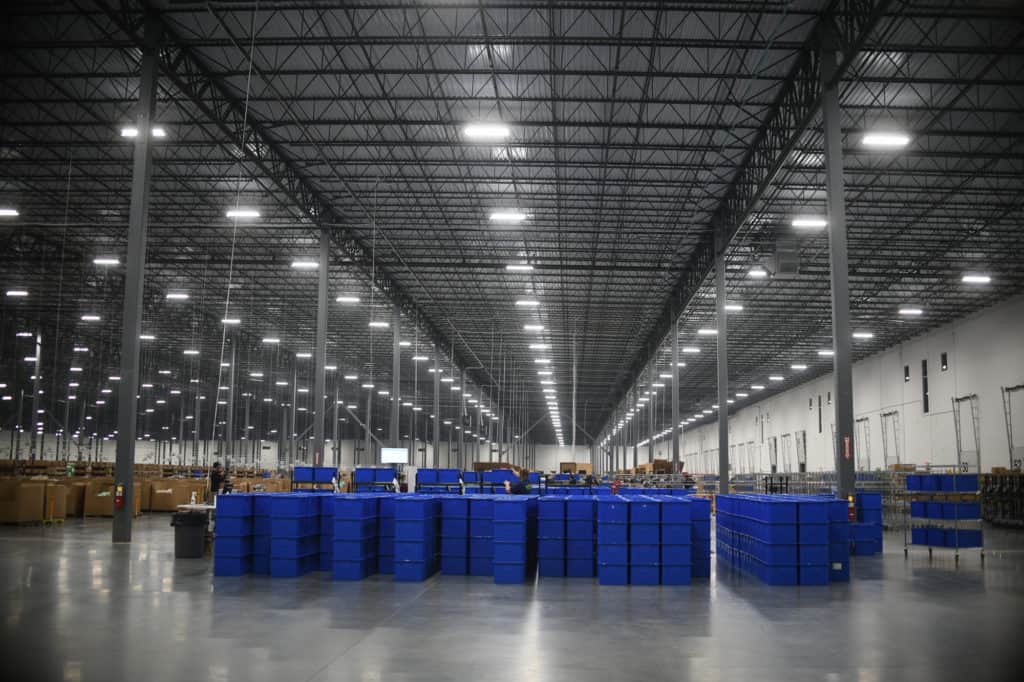Let’s face it: warehouses have a lot of choices when it comes to picking strategies, practices and tools. The solutions you choose must meet the needs of your operation, particularly those that require planning for unforeseen peaks or long-term scalability. In other words, no order picking processes or implementations are sustainable, labor-driven or otherwise, if they do not have the ability to evolve along with your company. Today, we’ll talk about one such tool still used in warehouses: the order-picking trolley a.k.a. pick cart.

Let’s first take a closer look at the three main ways picking trolleys are outdated and, even worse, are costing you money. Then, we’ll talk about how our collaborative robot, who we call Chuck, provides you with an immediate remedy:
- Picking trollies don’t promote accuracy
- Picking trollies don’t effectively cut down on picking time
- Picking trollies don’t support scalability
Here’s how your picking carts are holding back your operation, while our technology was designed to boost it.
1. Picking trolleys don’t promote accuracy
Because traditional picking carts rely on processes that are entirely manual, they do little to reduce human picking errors. In the past, the question of accuracy would just be treated as an inconvenient truth that warehouses would have to budget for. But these days, there is no need to roll the dice when it comes to your inventory and delivering customer satisfaction.
How 6 River System’s collaborative robots promote accuracy: Our collaborative robots use a directed workflow to enhance picking accuracy, leading your associates through the warehouse until all assigned tasks are complete. With a three-scan confirmation process (image, scan, put), error rates are reduced by as much as 95%.
2. Picking trolleys don’t effectively cut down on picking time
Sure, picking trolleys might be better than the alternative of pickers moving through the warehouse with their hands full of inventory, but the pick cart’s rudimentary design doesn’t improve on that idea all that much. When it comes down to it, pushing a heavy manual cart to picking areas several times per day doesn’t help with efficiency.
How 6 River System’s collaborative robots cut down on picking time: Our collaborative robots use cloud-based technology to determine the fastest picking routes within your warehouse, reducing overall steps, speeding up the operator and ultimately boosting overall throughput. Some of our customers average 200 UPH, while it’s common in a traditional pick cart operation to struggle to achieve 90 UPH.
3. Picking trolleys don’t support scalability
Most warehouse operations managers are keenly aware of the need to be able to scale on short notice to accommodate unexpected peaks in demand. That means you’ll need to invest in tools that can scale along with your operation. Otherwise, your order fulfillment times won’t support your operational needs in the future.
To scale fast with traditional picking trolleys the most common options are to either a) add more vertical bins to your existing trolleys or b) invest in more trolleys — and more employees to push them.
How 6 River System’s collaborative robot support scalability: Our collaborative robots are designed with scalability in mind. They don’t require any new infrastructure and can be quickly and easily added in smaller increments to support demand. Plus, operators can rent additional capacity during peak periods, and robots can easily be relocated to other facilities as needs change across your distribution and fulfillment centers. And, because Chuck paces your associates for enhanced productivity, your teams can get more done in less time.
A scalable solution that supports picking accuracy and efficiency, 6 River Systems offers an expanded line of collaborative robots with several models and configurations to meet the changing needs of the modern warehouse.



